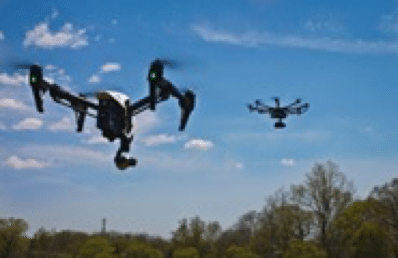
The NJ corporation, founded and run by George Finlay, has been doing work in desktop publishing and light aircraft areas since 1994.
Recently Principia, inc. received an FAA Section 333 exemption number 11633 permitting it to fly drones commercially anywhere in the U.S., restricted in the vicinity of airports and non-participants. Over the past year, they have been able to win further FAA approvals to operate near a growing list of airports, and closer to non-participants than most operators are permitted to fly.
Principia flies remotely-controlled copters (with 4 to 8 rotors), payloads up to 2 lbs, and flight durations up to 20 minutes, which equips them to do tower inspections, and to help tower companies obtain building permits.
The inspection application, although good in theory, has not been as practical as hoped according to Finlay. “It’s not entirely useful unless you have a ‘before’ picture to show if something is out of line or tilted and shouldn’t be,” Finlay said. “A drone can’t see what’s behind a girder.” Having a crucial section of tower eyeballed by an experienced climber is still the most effective solution for a quality inspection, he said. Drone technology can still be useful in a variety of ways such as in training videos and rendering 3D images of views from prospective towers by municipalities and towercos alike prior to their construction, according to Finlay.
Principia works with an experienced Pix4D technician, allowing them to insert renditions of planned towers into high resolution 3D models of areas around proposed tower locations. The resulting image can be viewed from any elevation and distance in any browser, giving tower companies a valuable tool as they work through the approval process. For more information go here.


